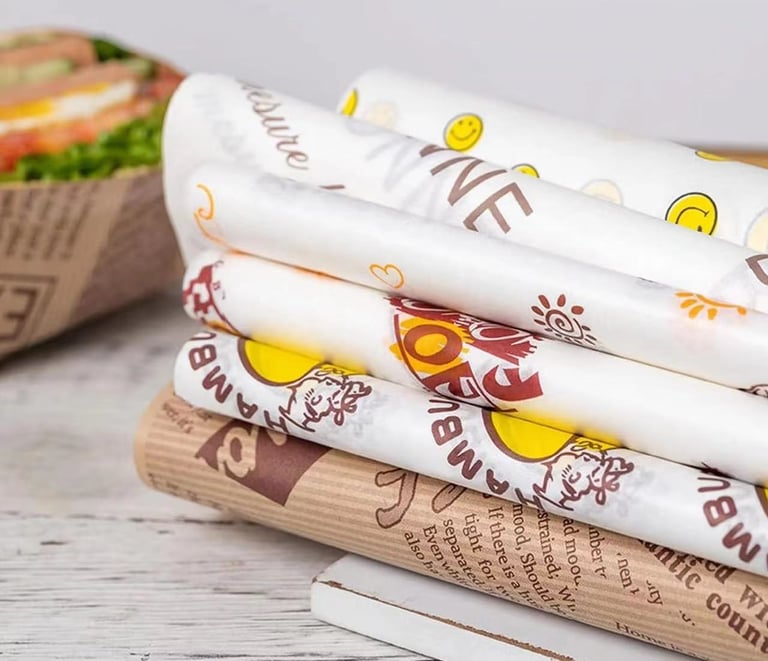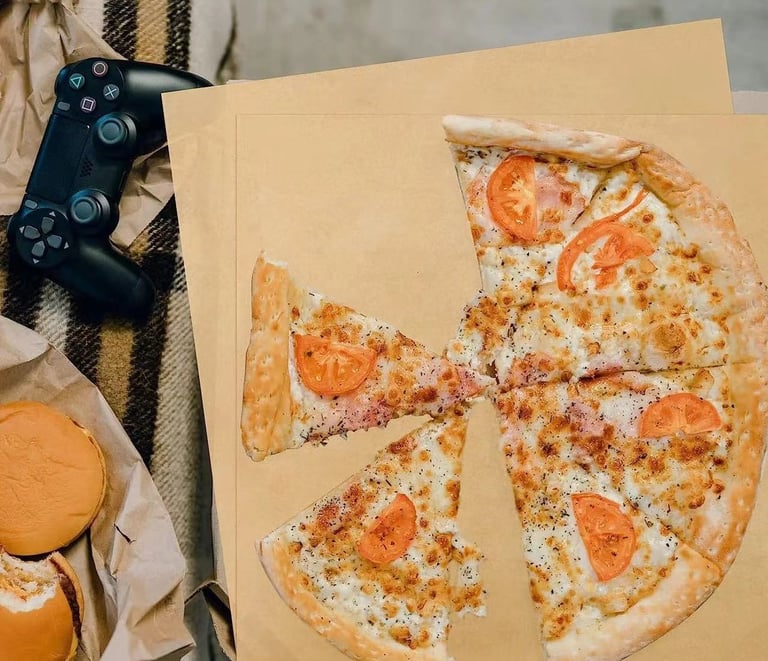Parchment Paper: Versatile Kitchen Essential
HOME SUPPLIES
7/22/20245 min read


Parchment paper, a kitchen staple, is used for baking and cooking to prevent sticking and make cleanup easier. But did you know it has other uses too? Beyond the kitchen, it can be used for arts and crafts, and even in the automotive industry as a liner for spray painting parts. This versatile paper is more than just a baking aid; it’s a multipurpose tool that every household should have. In this blog, we will delve into the various uses of parchment paper, its types, and its safety aspects.
Is Parchment Paper Edible?
One of the most common questions people have is whether parchment paper is edible. The answer is no, parchment paper is not edible. It's coated with silicone to make it non-stick and heat-resistant, but it's not meant for consumption. Always ensure you use it correctly to avoid any mishaps. While it’s safe to use in baking and cooking, it should never be ingested.
Can You Eat Parchment Paper?
To reiterate, no, you cannot eat parchment paper. It’s designed to withstand high temperatures and prevent sticking during baking, but it should not be consumed. Ingesting parchment paper could lead to digestive issues or choking hazards. It’s essential to keep it out of reach of children and pets who might mistakenly think it’s food.
Brown Parchment Paper: An Eco-Friendly Choice
Brown parchment paper is unbleached and free from harmful chemicals, making it a more environmentally friendly option compared to white parchment paper. It's perfect for eco-conscious bakers who want to reduce their carbon footprint. The natural color indicates that it hasn’t undergone the bleaching process, which often involves chlorine and other chemicals that can be harmful to the environment.
Non-Toxic Parchment Paper: A Safe Baking Option
Non-toxic parchment paper is free from harmful chemicals, making it a safe choice for baking. It ensures your baked goods don’t stick to the pan while providing a healthier option for food preparation. Non-toxic labels guarantee that the parchment paper doesn’t contain chemicals that could leach into your food during cooking, providing peace of mind for health-conscious individuals.
Baking Paper Toxic: What You Need to Know
Most baking papers are safe to use, but it’s important to check for non-toxic labels. Some cheaper options may contain harmful chemicals that can leach into food during baking. Ensuring your baking paper is labeled as non-toxic can prevent potential health risks. When selecting parchment paper, always opt for reputable brands that clearly state their products are free from harmful substances.
Parchment Paper in Baking
Parchment paper is most commonly used in baking. It provides a non-stick surface that makes removing baked goods from trays and pans easy and mess-free. Whether you’re baking cookies, cakes, or pastries, parchment paper ensures even cooking and prevents your treats from sticking to the pan. It’s also helpful for lining cake pans and rolling out dough.
Using Parchment Paper for Cookies
One of the best uses of parchment paper is for baking cookies. Place a sheet on your baking tray before arranging your cookie dough. The parchment paper ensures even baking and easy removal. Once your cookies are done, simply lift the paper, and your cookies will slide right off. This method also saves time on cleanup since your tray remains clean.
Cakes and Parchment Paper
When baking cakes, parchment paper can be used to line the bottom of the pan. Cut a circle of parchment paper to fit the base of your cake pan, then place it in the pan before adding your batter. This ensures your cake won’t stick to the bottom and will come out cleanly once baked. It’s especially useful for delicate cakes that might break apart if they stick to the pan.
Rolling Out Dough
Parchment paper is also excellent for rolling out dough. Place a sheet on your countertop, then place your dough on top. Cover the dough with another sheet of parchment paper and roll it out. This method prevents the dough from sticking to your rolling pin and countertop, making the process cleaner and easier.
Beyond the Kitchen: Other Uses of Parchment Paper
Parchment paper’s usefulness extends beyond the kitchen. It can be a handy tool for various DIY projects and even some industrial applications. Here are some creative uses of parchment paper outside the culinary world.
Arts and Crafts
Parchment paper is an excellent material for arts and crafts. It can be used as a protective layer when working with paints and glue, preventing messes and sticking. Artists can also use it to create stencils or patterns, as it’s easy to cut and shape. Additionally, parchment paper can be used in iron-on transfers for fabric crafts, acting as a barrier to protect the fabric.
Automotive Industry
In the automotive industry, parchment paper is used as a liner for spray painting parts. Its non-stick and heat-resistant properties make it ideal for this application. It prevents paint from sticking to surfaces where it’s not wanted and can withstand the high temperatures involved in some painting processes.
DIY Projects
For DIY enthusiasts, parchment paper can be a lifesaver. It can be used as a surface protector when working with hot glue, as it won’t stick to the glue. Additionally, it can be used to trace and transfer patterns onto wood or other materials. Its versatility makes it a useful tool for various home projects.
Comparing Parchment Paper and Other Baking Papers
There are different types of baking papers available, each with its own set of properties. Here’s a comparison of parchment paper with wax paper and aluminum foil.
Parchment Paper vs. Wax Paper
Parchment paper and wax paper are often used interchangeably, but they have different properties. Parchment paper is heat-resistant and non-stick, making it suitable for baking. Wax paper, on the other hand, is coated with wax and is not heat-resistant. It’s best used for wrapping food or lining surfaces for non-heat applications.
Parchment Paper vs. Aluminum Foil
Aluminum foil is another kitchen staple, but it serves different purposes than parchment paper. Foil is excellent for insulating and conducting heat, making it ideal for roasting and grilling. However, it doesn’t provide the non-stick surface that parchment paper does. For baking, parchment paper is the better choice to prevent sticking and ensure even cooking.
Choosing the Right Parchment Paper
When selecting parchment paper, it’s important to consider its quality and safety. Look for parchment paper that is labeled as non-toxic and free from harmful chemicals. Opting for reputable brands can ensure you’re getting a product that is safe for your food and reliable in performance.
Factors to Consider
Thickness: Thicker parchment paper can handle higher temperatures and is less likely to tear.
Coating: Ensure the coating is silicone-based for non-stick properties.
Size: Choose the right size for your baking trays and pans to avoid wastage.
Eco-Friendly Options
For those who are environmentally conscious, there are eco-friendly options available. Unbleached parchment paper is free from chlorine and other bleaching agents, making it a safer choice for the environment. Additionally, some brands offer compostable parchment paper that can be disposed of more sustainably.
Conclusion: The Essential Kitchen Tool
Parchment paper is an essential tool in any kitchen. Its versatility and functionality make it invaluable for baking and cooking. From ensuring your cookies come out perfectly to aiding in various DIY projects, parchment paper proves to be more than just a baking aid. Its eco-friendly options also provide a safer choice for the environment. By choosing the right parchment paper, you can enhance your cooking experience and explore its many uses beyond the kitchen.


